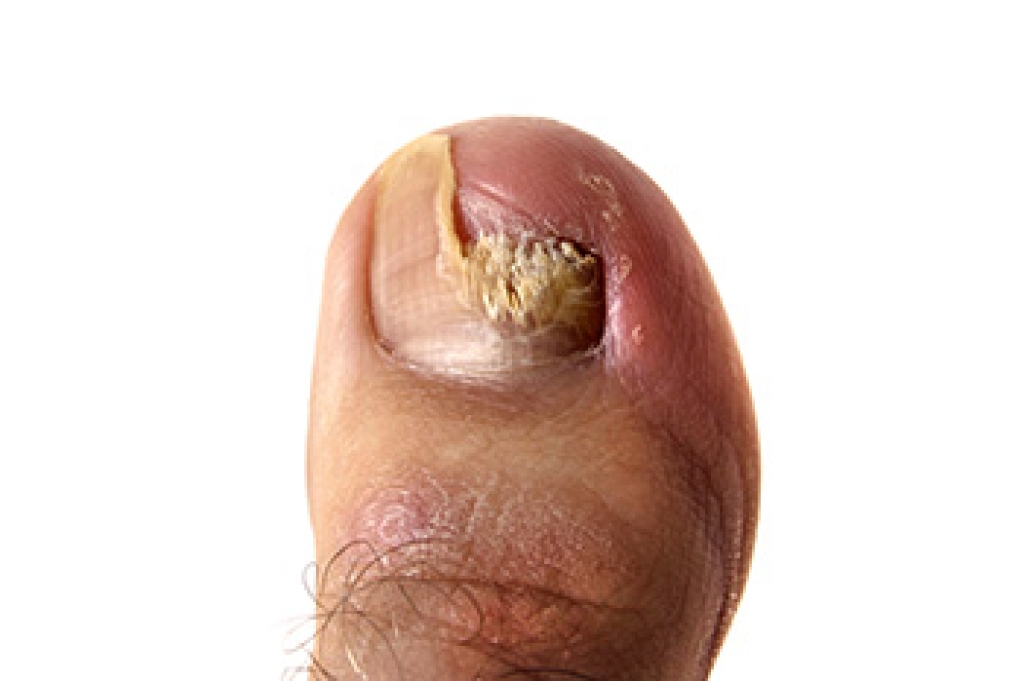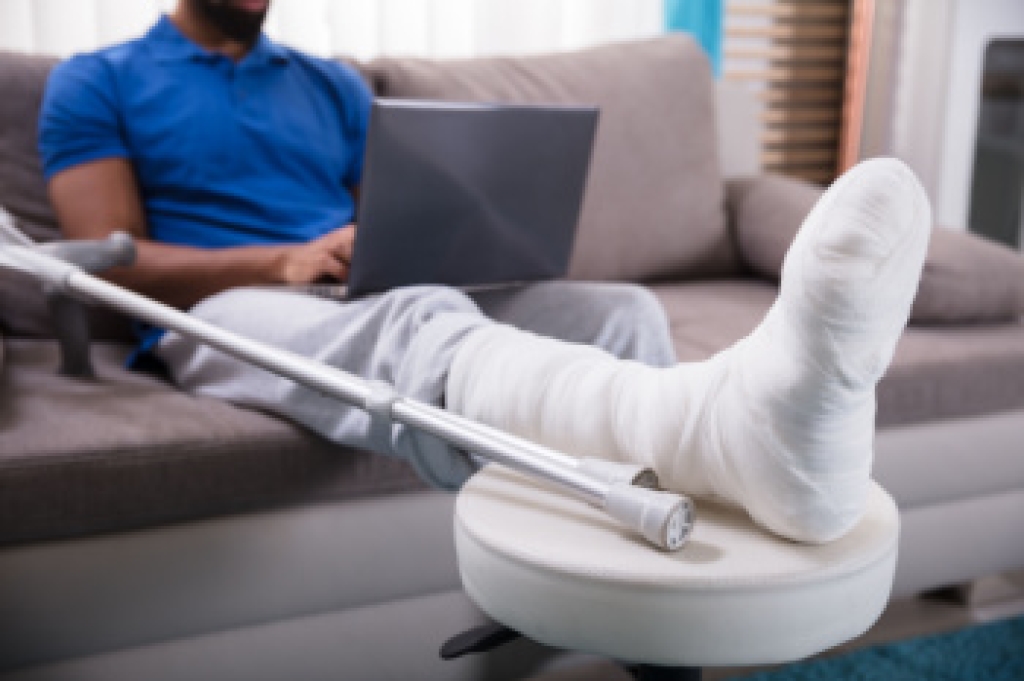 Patients who have experienced an ingrown toenail are often aware of the pain and discomfort this condition can cause. It is defined as the corner of the toenail growing into the surrounding skin. It can occur as a result of wearing shoes that do not have adequate room for the toes to move freely in, or from trimming the toenails improperly. Mild relief can be found when the affected nail is soaked in warm water. This may help in lifting a portion of the skin away from the nail while using a cotton swab. If the toenail becomes infected, a yellow discharge may appear, and a fever may develop. It is suggested that you consult with a podiatrist if you have an ingrown toenail who can determine what the best treatment method is for you.
Patients who have experienced an ingrown toenail are often aware of the pain and discomfort this condition can cause. It is defined as the corner of the toenail growing into the surrounding skin. It can occur as a result of wearing shoes that do not have adequate room for the toes to move freely in, or from trimming the toenails improperly. Mild relief can be found when the affected nail is soaked in warm water. This may help in lifting a portion of the skin away from the nail while using a cotton swab. If the toenail becomes infected, a yellow discharge may appear, and a fever may develop. It is suggested that you consult with a podiatrist if you have an ingrown toenail who can determine what the best treatment method is for you.
Ingrown toenails can become painful if they are not treated properly. For more information about ingrown toenails, contact one of our podiatrists of Graff Foot, Ankle and Wound Care. Our doctors can provide the care you need to keep you pain-free and on your feet.
Ingrown Toenails
Ingrown toenails occur when a toenail grows sideways into the bed of the nail, causing pain, swelling, and possibly infection.
Causes
- Bacterial infections
- Improper nail cutting such as cutting it too short or not straight across
- Trauma to the toe, such as stubbing, which causes the nail to grow back irregularly
- Ill-fitting shoes that bunch the toes too close together
- Genetic predisposition
Prevention
Wearing proper fitting shoes and using proper cutting techniques will also help decrease your risk of developing ingrown toenails.
Treatment
Ingrown toenails are a very treatable foot condition. In minor cases, soaking the affected area in salt or antibacterial soaps will not only help with the ingrown nail itself, but also help prevent any infections from occurring. In more severe cases, surgery is an option. In either case, speaking to your podiatrist about this condition will help you get a better understanding of specific treatment options that are right for you.
If you have any questions, please feel free to contact our offices located in Plano, Dallas, Prosper, Allen, Garland, Frisco, and Coppell, TX . We offer the newest diagnostic and treatment technologies for all your foot care needs.




